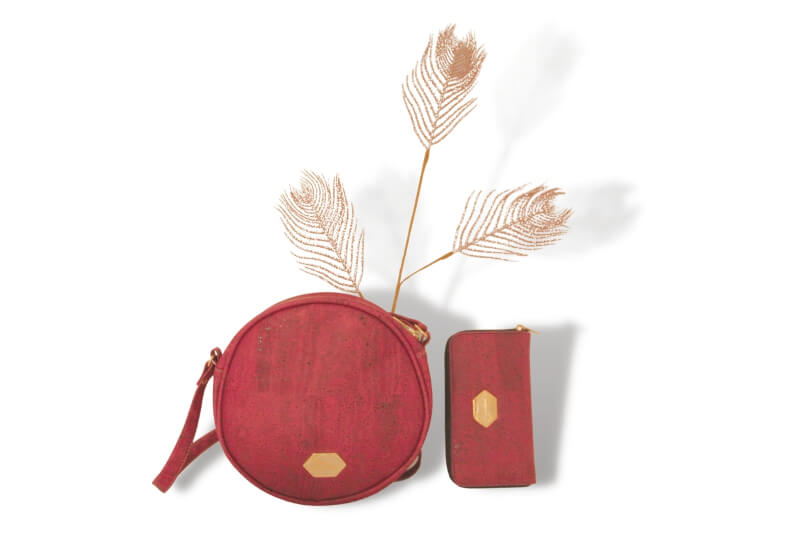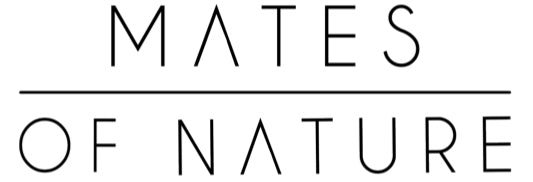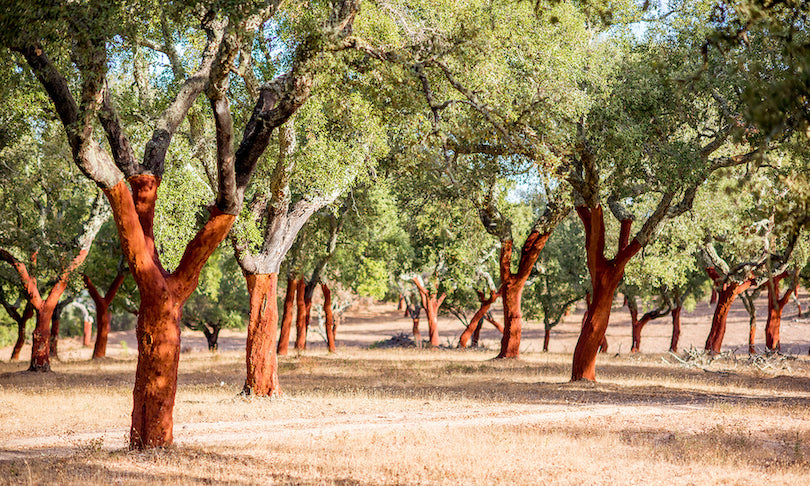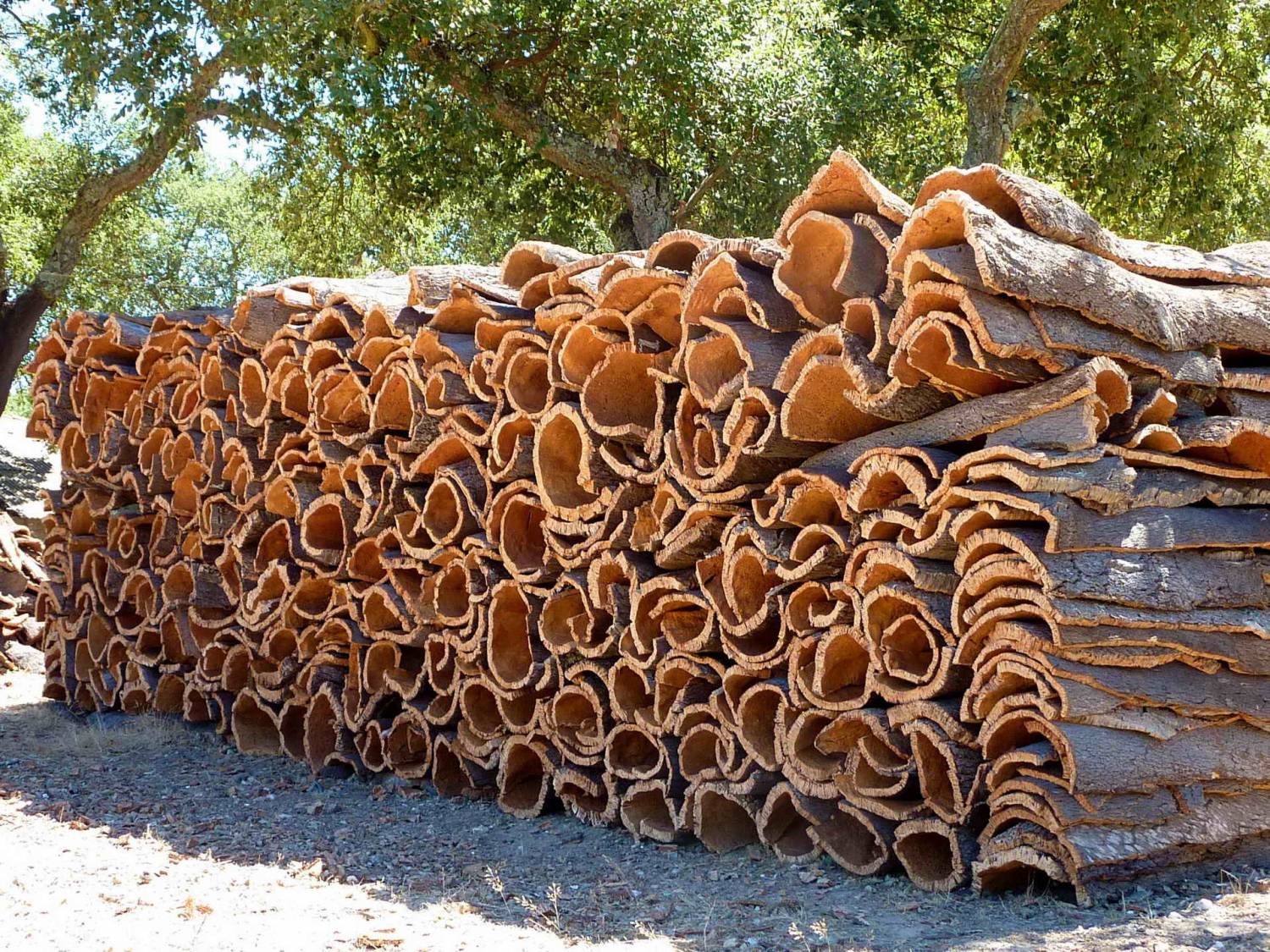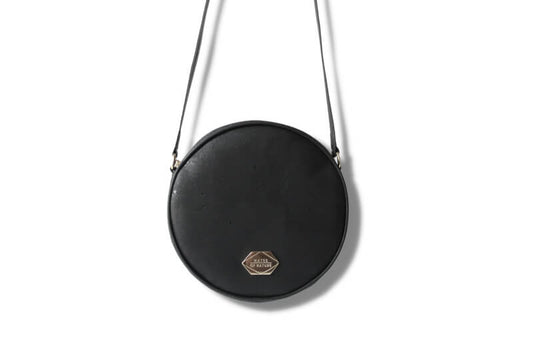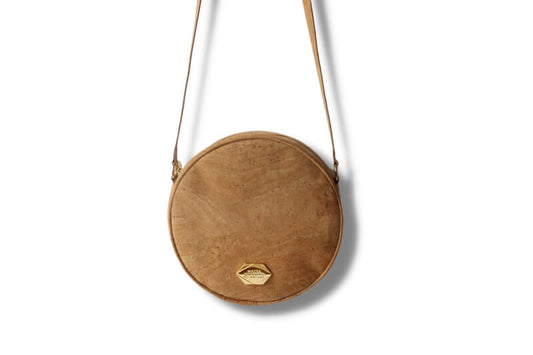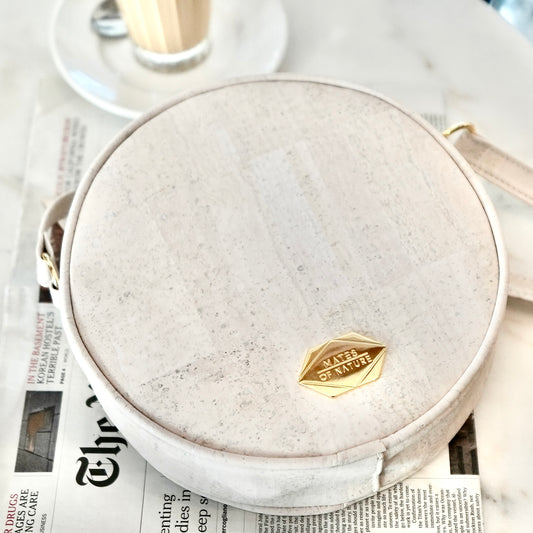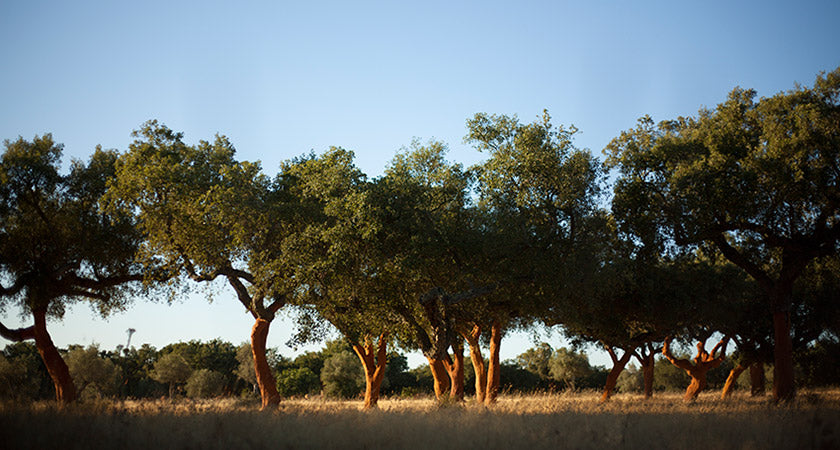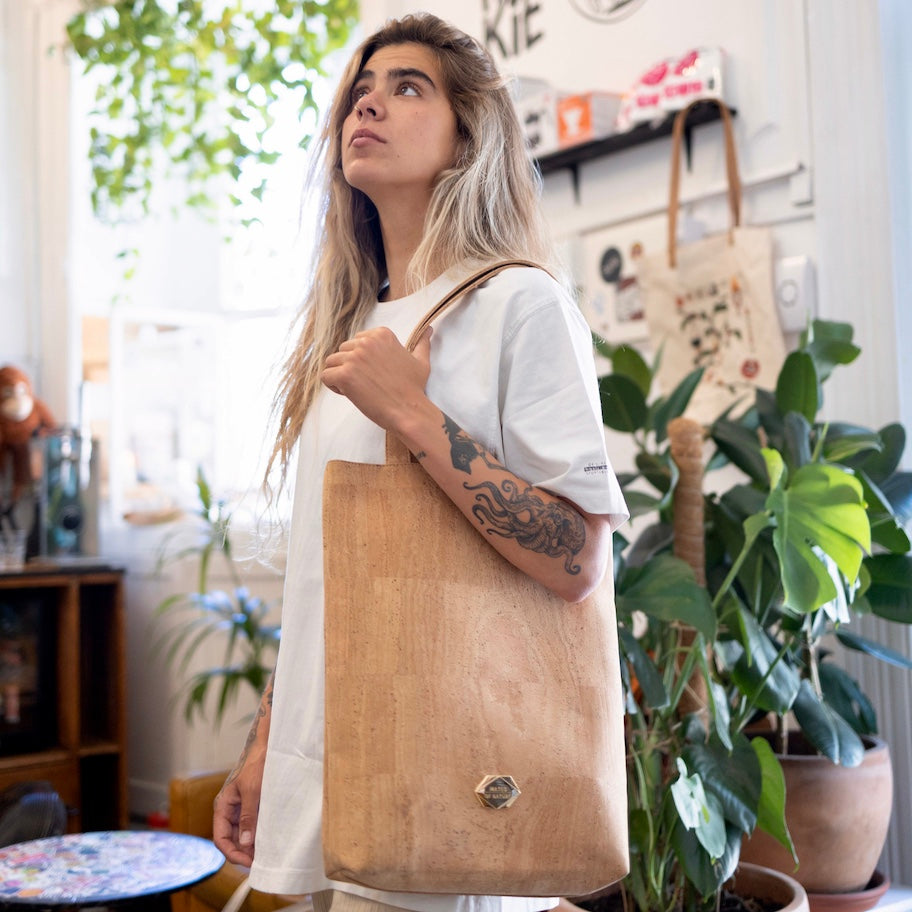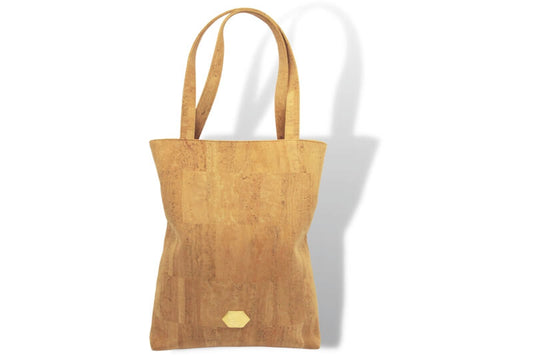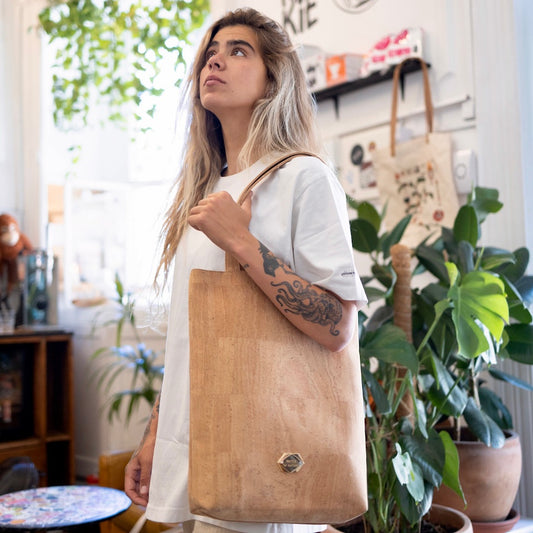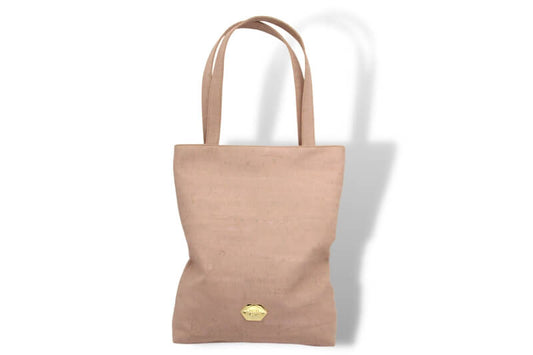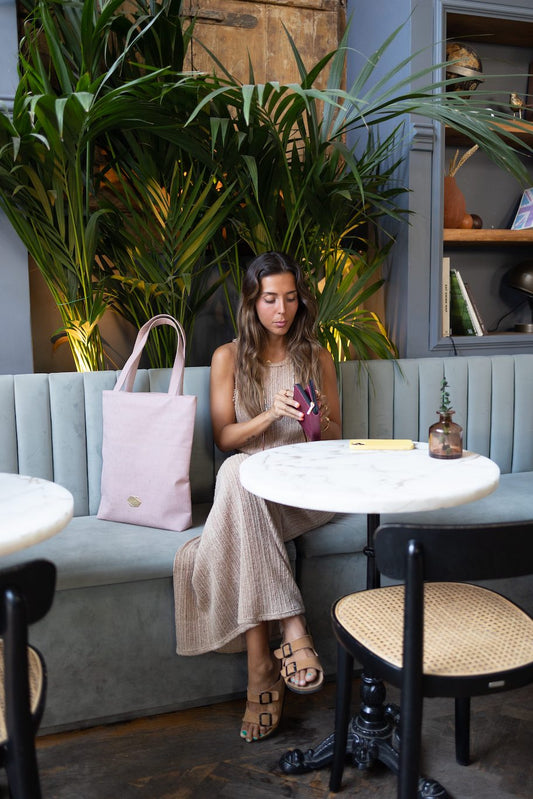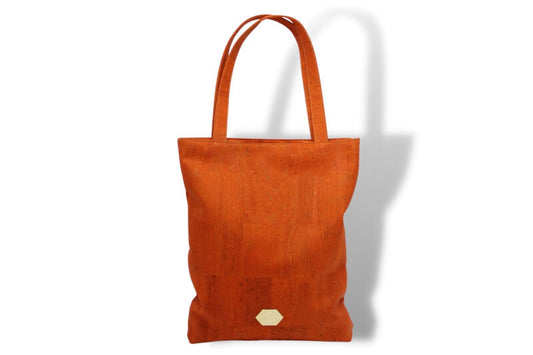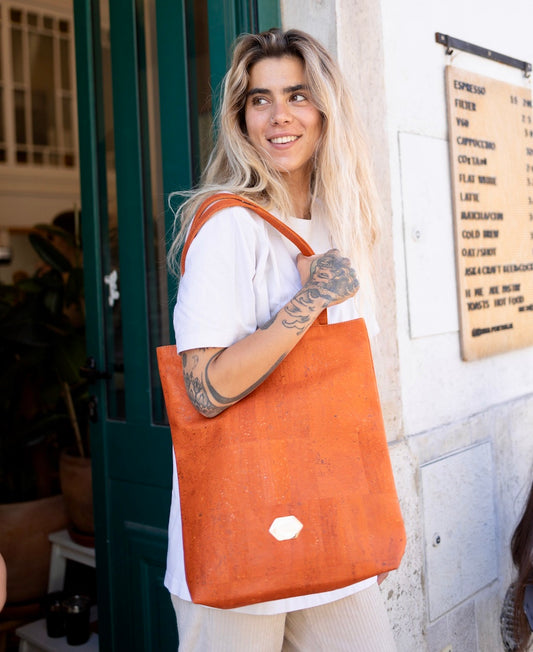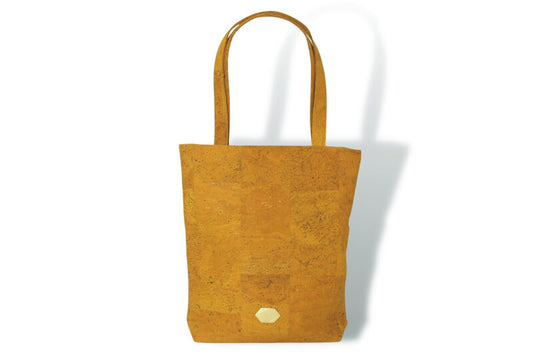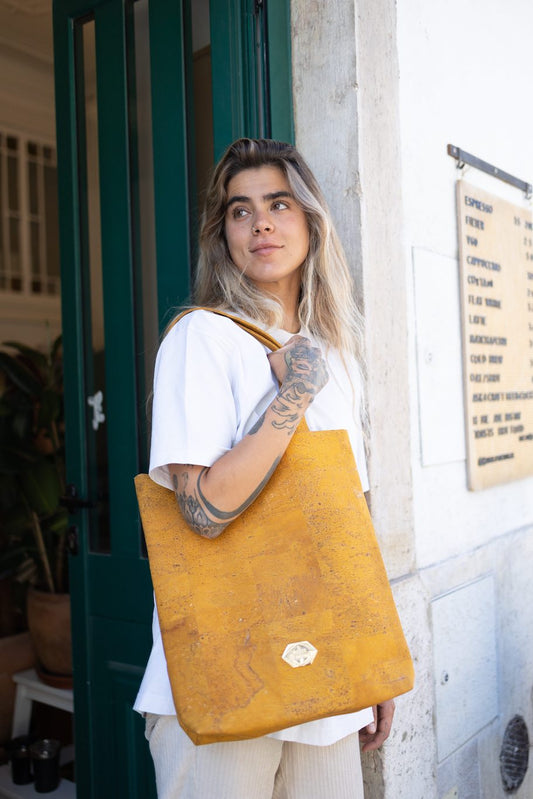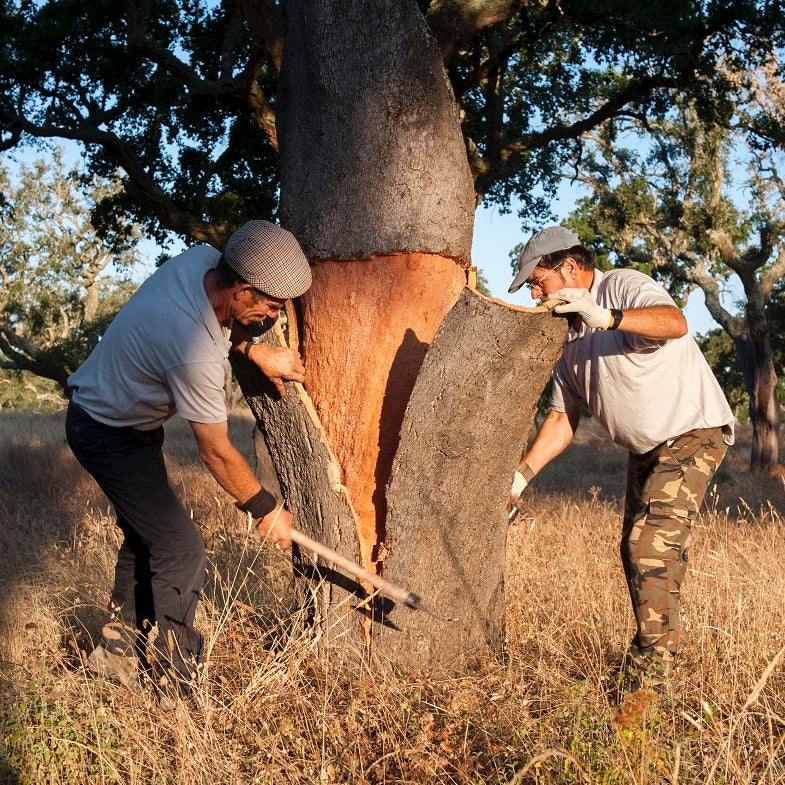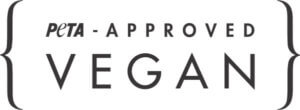About cork
In this article we have collected all the interesting information about cork .
Enjoy reading!
About cork
- From cork oak to cork textile
- Cork and the Environment
- The animals and plants of the cork forests
- Production of our cork products in Portugal
- Production and properties of cork textile
- From bark to cork textile
- The advantages of cork at a glance
- Care and cleaning of our cork products
- Frequently asked questions about cork
- Your opinions on our bags & wallets made of cork
VON DER KORKEICHE ZUM KORKTEXTIL
Das nachwachsende Material Kork wird aus der Rinde der Korkeiche gewonnen. Für die Korkproduktion muss kein einziger Baum gefällt werden, die Korkeiche wird lediglich geschält. Das Schälen der Korkbäume hat keine negativen Auswirkungen auf die natürliche Entwicklung der Korkeiche. Der Baum wird per Hand geschält. Bei diesem Prozess wird von erfahrenen Erntearbeitern mit der Axt in die Rinde geschlagen. Während dieser Prozedur darf der Baumstamm auf keinen Fall beschädigt werden, da dieser sonst verletzt werden würde und zum Absterben führen könnte. Deshalb werden die Fähigkeiten der besonderen Ernte seit Generationen weitergegeben. Die Schälung der Korkeichen erfolgt in den Monaten Mai bis August.
Ein Korkbaum wird erstmals im Alter von 25 Jahren geschält. Die Korkrinde wächst dann natürlich nach und wird nur alle 9 Jahre, insgesamt bis zu 17 Mal, geschält. Die Korkeiche ist sehr langlebig und erreicht in der Regel ein Alter von mehr als 200 Jahren. Eine Korkeiche produziert während ihrer Lebensdauer bis zu 700kg Kork.
-
Circle Bag - Round Handbag in Coal Black Cork (Black)
Regular price €89,90Regular priceUnit price per -
Circle Bag - Round handbag in nude cork (natural)
Regular price €79,90Regular priceUnit price per€89,90Sale price €79,90Sale -
Women's wallet in red grape cork (red)
Regular price €49,90Regular priceUnit price per€79,90Sale price €49,90Sale -
Circle Bag - Round handbag in beige cork (white)
Regular price €89,90Regular priceUnit price per
KORK UND DIE UMWELT
Korkeichenwälder leisten einen großen Beitrag zur Erhaltung der Umwelt. Die Bäume ertragen Dürre und stellen wenige Ansprüche an die Bodenbeschaffenheit. Die Korkeichenwälder, im Portugiesischen “montados” genannt, tragen zur Regulierung des Wasserhaushalts und zum Schutz der Böden bei und beugen so der Versteppung vor. Dadurch, dass die Korkeiche ein langlebiger und immergrüner Laubbaum ist, nimmt Kork einen erheblichen Teil von Kohlendioxid (CO2), u. a. hauptverantwortlich für die globale Erwärmung, bei der Fotosynthese auf. Die portugiesischen Korkeichenwälder binden jährlich rund 4,8 Millionen Tonnen CO2 von insgesamt 14 Millionen Tonnen weltweit. Mit weniger als 1,5 Hektar Korkeichenwald lässt sich der jährliche CO2-Ausstoß eines Mittelklassewagens ausgleichen.

Die Tiere & Pflanzen der Korkwälder
Korkeichenwälder beherbergen, neben der großen Vielfalt von Pflanzenarten, eine Reihe einzigartiger und geschützter Tierarten, zum Beispiel die Wildkatze, den iberischen Luchs (die weltweit am stärksten bedrohte Raubkatzenart), Vogelarten und verschiedene Adlerarten (z. B. den Stein-, Schlangen-, Zwerg- oder Habichtsadler).

PRODUCTION OF OUR CORK PRODUCTS IN PORTUGAL
As the country of origin for the cork and also for the production of our models, we have opted for local production in Portugal . This not only has the environmental advantage of short transport routes within the EU, but also strengthens the traditional background of cork craftsmanship for us.
More than half of the world trade in cork is in Portugal, where more than 30% of the world's cork trees grow, totaling 736,000 hectares. Due to reforestation, the acreage of cork oaks in Portugal is growing by about 1 percent annually. This is reflected in the economic and social importance of the cork oak for the Portuguese population. The cork oak forests and the associated forestry provide over 100,000 direct jobs in industry and indirect jobs (forestry, animal husbandry, catering, tourism, etc.). We want to support the "country of origin" of cork and its economy.
HERSTELLUNG UND EIGENSCHAFTEN VON KORKTEXTIL
Wir haben uns für Korktextil als vegane Lederalternative entschieden. Korktextil fühlt sich samtweich an. Die Textilie ist haptisch vergleichbar mit geschmeidigem Wildleder. Dadurch, dass die Rinde des Korkbaumes an die ökologische Anpassung an das trocken-heiße Klima in Portugal gewöhnt ist ist Kork äußerst robust und wasserabweisend. Durch die natürliche Maserung der Korkrinde ist jedes Modell einzigartig. Korktextil ist außerdem geruchslos, antiallergisch und pflegeleicht.
-
Shopper - Large Bag in Nude Cork (Natural)
Regular price €79,90Regular priceUnit price per -
Shopper - Large Bag in Rose Cork (Pink)
Regular price €79,90Regular priceUnit price per -
Shopper - Large bag in papaya cork (orange)
Regular price €79,90Regular priceUnit price per -
Shopper - Large Bag in Mustard Cork (Yellow)
Regular price €69,90Regular priceUnit price per€79,90Sale price €69,90Sale
From bark to cork textile
In order to be able to use the cork bark as a textile, it is first aired after harvesting. After that, the cork bark is steamed and boiled. Steaming and cooking reduce pollutants, causing greater elasticity and lower density. Following the boiling bath, the cork material is dried. To produce the cork textile, parts are cut from the bark, which in turn are glued together. Ultimately, a roll is created from which cork strips are cut into very thin sheets and glued to a textile reinforcement, the so-called carrier material. We use a mixture of cotton, polyester and polyurethane (PU) as reinforcement. PU is less harmful to the environment than polychloride (PVC), which is normally used for imitation leather. The finished cork textile can then be processed like leather into cork bags and wallets .
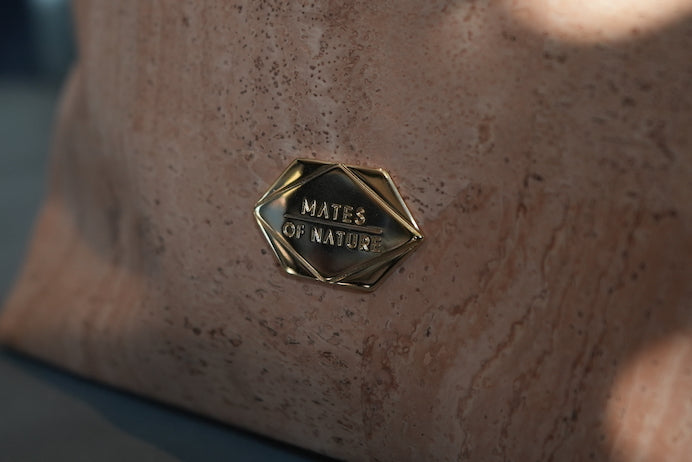
THE ADVANTAGES OF CORK AT A GLANCE
– Cork is light & velvety soft
– Cork is hypoallergenic and odorless
– Cork is moisture resistant & water repellent
– Cork is easy to clean
– Cork is a renewable raw material & vegan
Convinced? We have summarized these and other reasons for cork in detail in an article here.
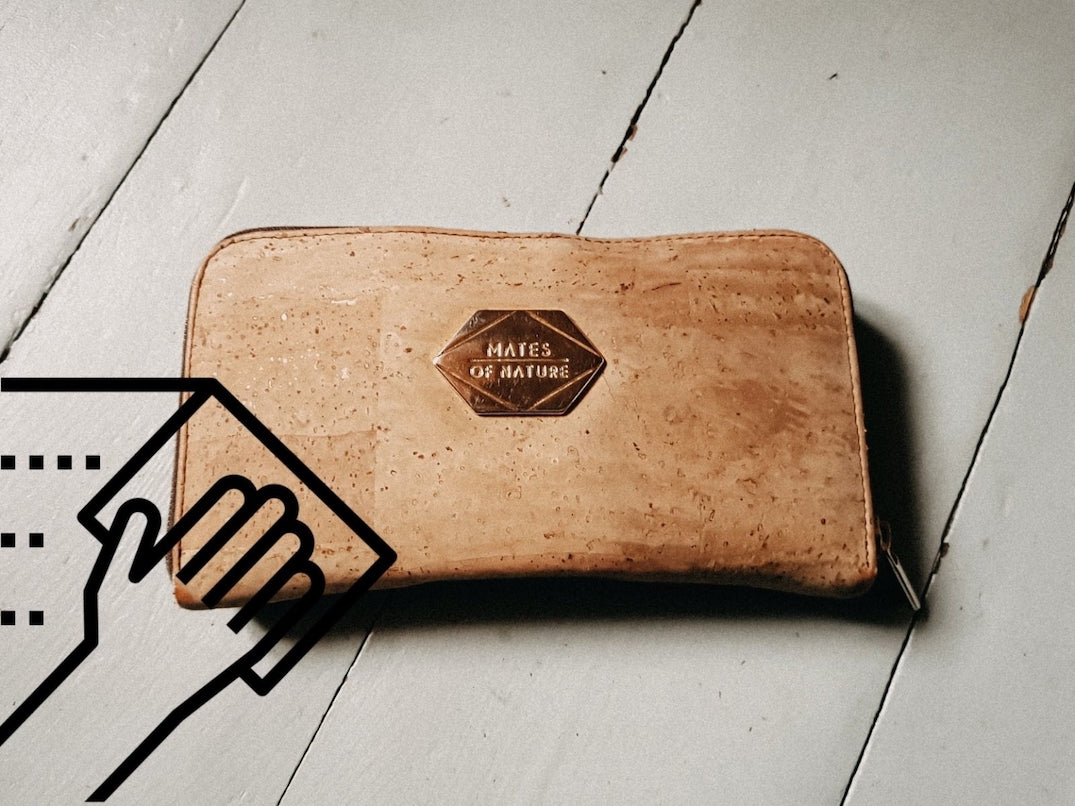
CARE AND CLEANING OF OUR CORK PRODUCTS
Cork is a “natural leather alternative” . It reacts to its environment. Sometimes the cork darkens after prolonged use and skin contact. Due to the grain, bumps can develop during use. That is normal. Should you ever want to clean your cork model: Cork textile can be cleaned with a clean cloth, a little mild washing-up liquid and water. A light wiping of the cork textile is sufficient here. In the case of heavier soiling, you can also gently wash the cork of our vegan bags and wallets by hand. After washing, hang up the bag and let it dry naturally. After that, your bag will be like new!
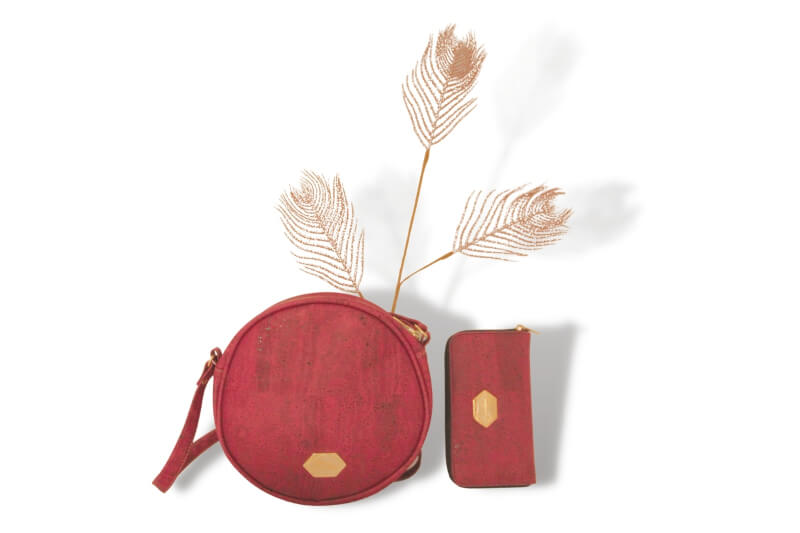
Mates of Nature
Set Circle Bag & Purse in Red Grape Cork (Red)
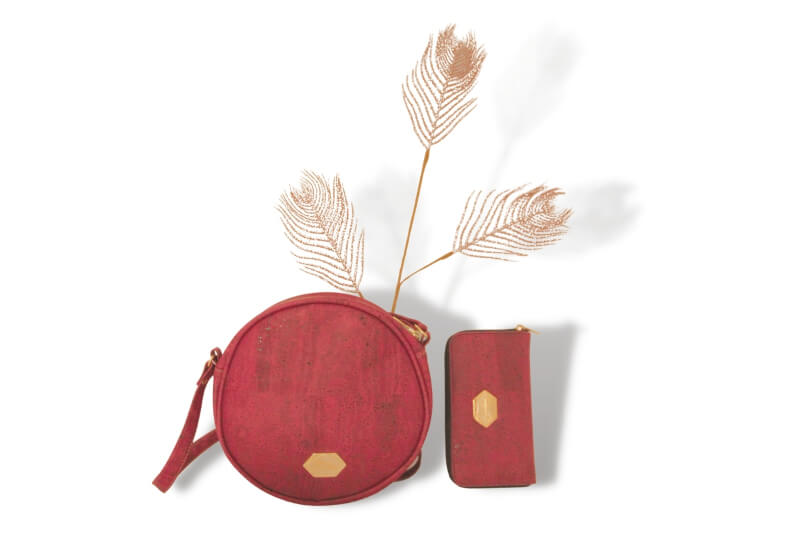
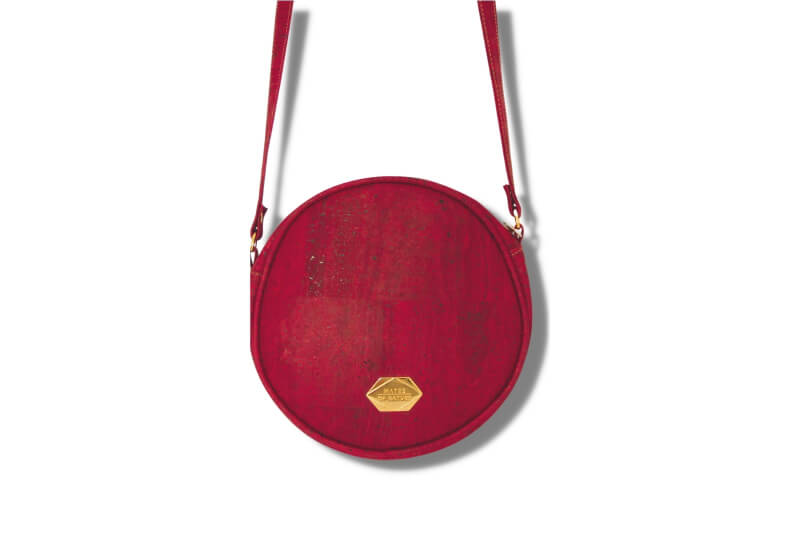
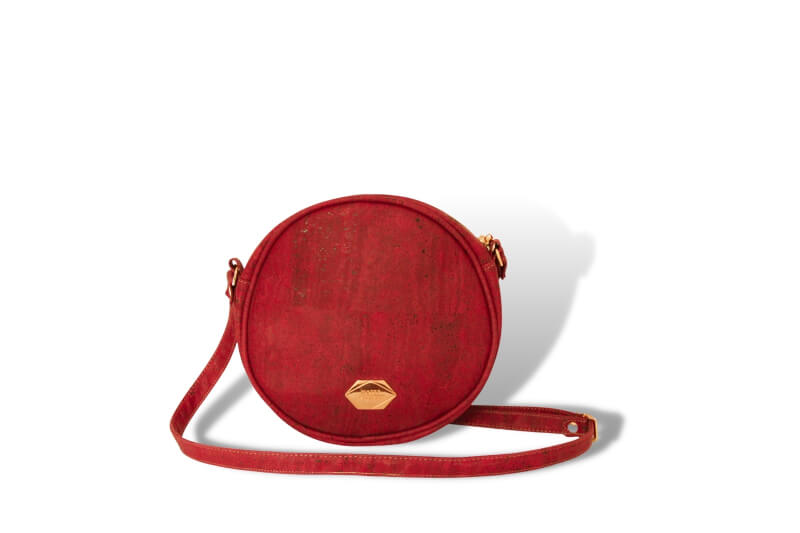
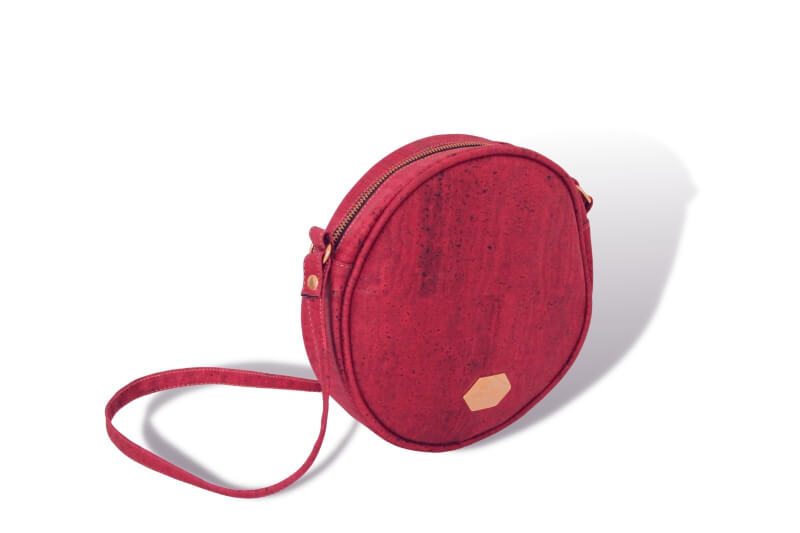
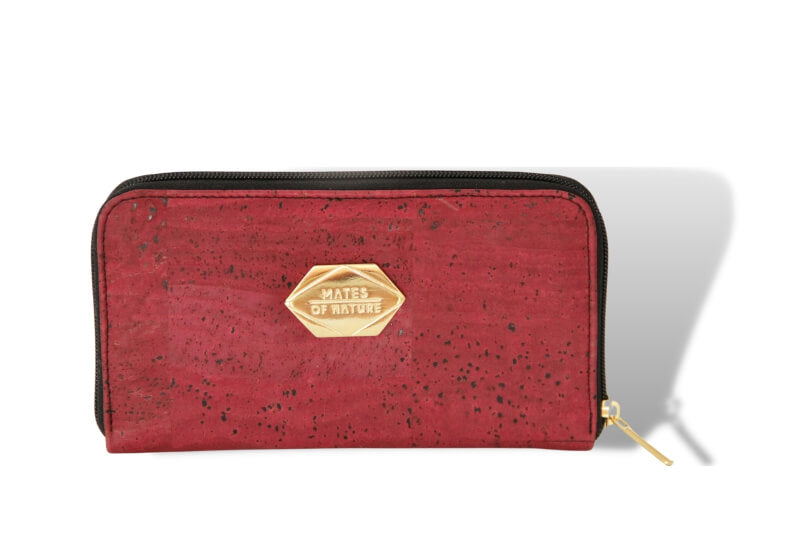
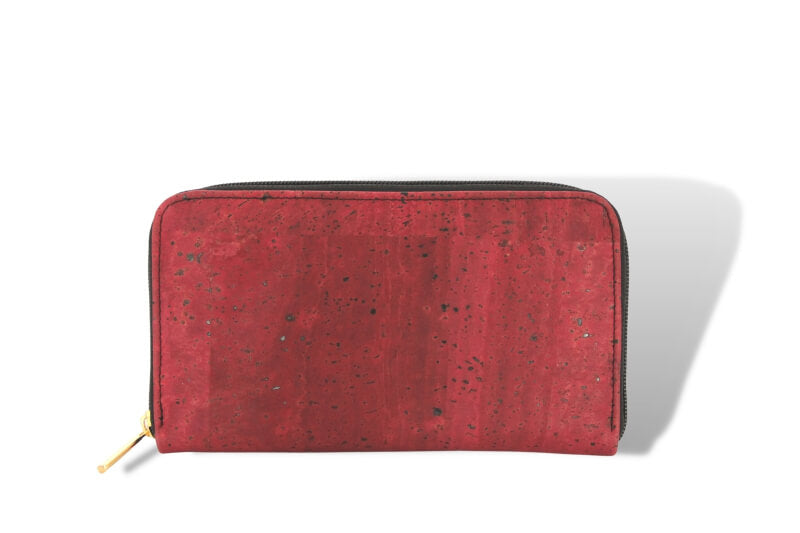
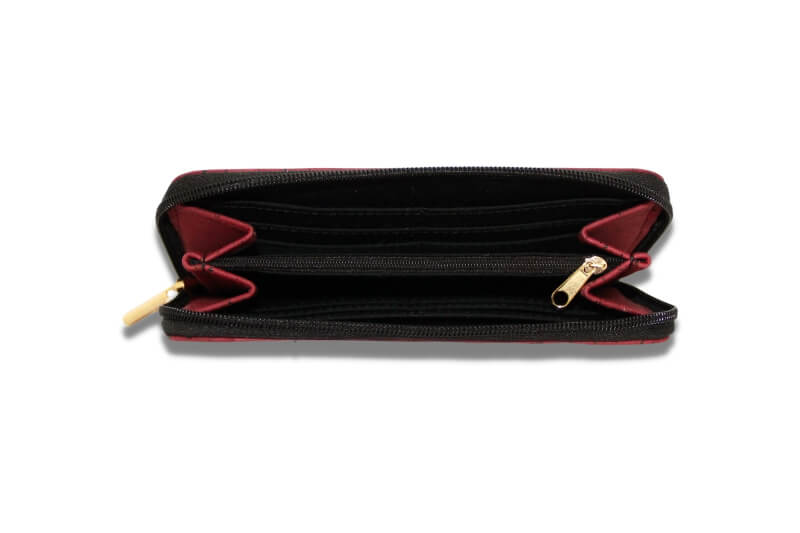
Frequently asked questions about cork
Where does cork come from?
Cork oaks grow in the Mediterranean region. The main cork production is in southern Portugal and southern Spain. The cork is obtained from the bark of the cork oak.
Is cork eco-friendly?
Cork is a natural resource. Cork is renewable and recyclable, it is biodegradable making it 100% sustainable and eco-friendly.
Why is cork the ideal leather alternative?
Whether you are vegan or not, there are good reasons to use cork as an alternative to leather . Leather can cause allergies and can be carcinogenic due to the sometimes toxic chemical tanning . As a consumer, however, you rarely notice this and you can hardly protect yourself.
With our designer handbags and wallets made of cork you get an ideal alternative, because cork is anti-allergic, a natural material and also vegan.
Do trees have to be felled for cork?
No! The material cork is obtained from the bark of the cork oak. Not a single tree has to be felled for cork production, the cork oak is only peeled.
Find more information about the vegan raw material cork and cork production here.
Can cork textile be cleaned?
Cork textile is a vegan leather alternative and can either be cleaned with a clean cloth with a little washing-up liquid and water. A light wiping of the cork textile is sufficient here. For coarser soiling, the cork textile of our bag models can also be gently washed by hand. After washing, hang up the bag and let it dry naturally. After that, your bag will be like new!
What happens when cork gets wet?
Cork, like tree bark itself, is a moisture resistant material. This means that cork, which is processed for bags, is also moisture-resistant against moisture and rain. Unlike leather products, which soak up water and form water marks, drops of water roll off cork textiles. Cork is therefore water-repellent and therefore the ideal material for bags in wind and weather!
What properties does cork have?
As a natural product, cork, which can be processed into various products, is made from the bark of the cork oak. Cork is water-repellent, anti-allergic, floatable, recyclable, biodegradable, elastic, stable, antibacterial, light in weight, flame retardant, non-aging, a renewable raw material and CO2-neutral, as well as insulating against heat, cold and sound. Whether as a floor, for insulation, as accessories, clothing, etc. - cork can be used in many ways because of its great properties!
